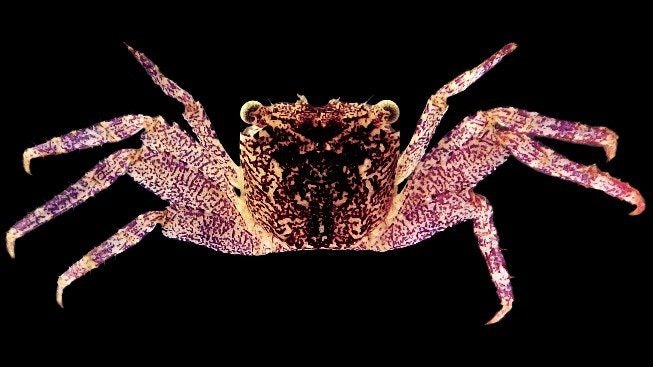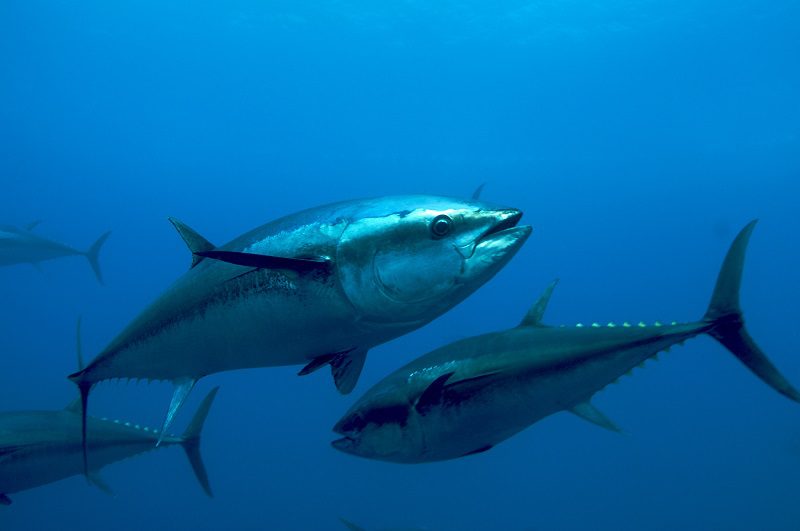January 18, 2022
10 good ocean news stories from 2021
Estimated reading time: 0 minutes
BY: Rachelle Naddaf
Topics:
With articles about climate change, overfishing and plastic pollution dominating the ocean news cycle, it can be easy to feel pessimistic. But that’s not the whole story. This past year, many new and wonderful things happened in the realm of ocean science! There is still a lot to be excited about, and with solutions coming forward every day to threats the ocean faces, there is even more reason to feel optimistic and hopeful for the future. Here are ten of our favourite, good ocean news stories from 2021:
1) Two new species of whales were described
- Observing new, large mammals is incredibly rare in the current era. In 2021, however, not just one but TWO new species of whales were described! Both were previously believed to be other species of whales, but after closer genetic and morphological analysis they were found to be distinct species. The first, announced in January 2021 and tentatively named Rice’s whale, was found in the Gulf of Mexico and was previously thought to be a population of Bryde’s whale. The second, announced in October 2021, is an incredibly rare beaked whale found off the coast of New Zealand. Named “Ramari’s beaked whale,” after Māori whale expert Ramari Stewart. This deep-diving species mostly lives at depths of over 1,800 metres below the sea surface.
2) Fossil of an ancient ocean animal discovered, older than the dinosaurs
- A new fossil discovery from the Burgess Shale in southeastern British Columbia has paleontologists “giddy” with excitement. This new species, called Titanokorys gainesi, was a large crustacean that lived in the world’s oceans about 500 million years ago – at least 300 million years before the first dinosaurs. It is a very strange looking creature that loosely resembles a modern-day horseshoe crab. Described as a swimming head with eyes set at the back of its shield-shaped shell or carapace. Researchers believe that this new discovery will provide greater insight into our understanding of the origin of all animals on Earth.
3) 60,000 square kilometres of ocean added to protected area around the Galapagos islands
- This past November, Ecuador’s president announced that a marine-protected area, the Galapagos Marine Reserve, would be expanded by 60,000 square kilometres. The Marine Reserve is already one of the world’s largest marine reserves, at around 133,000 square kilometres. This expansion will also include the Cocos Ridge off of Costa Rica, which is an import migration and feeding area for animals like hammerhead sharks, whales, manta rays and sea turtles.

4) Elusive Bigfin squid caught on video
- Bigfins are a deep-sea squid that are rarely seen, with only 12 confirmed sightings worldwide. It’s not every day that deep-sea explorers encounter a Bigfin squid, but that’s exactly what happened during NOAA’s 2021 expedition off the West Florida Escarpment in the Gulf of Mexico. Researchers spotted one on camera at 2,385 metres below the ocean’s surface. With increasing accessibility to the deep sea because of advancements in technology, more sightings are likely in the future, allowing scientists to learn more about the biology and behaviour of this elusive squid.
5) Hot air balloon mimicking sea jelly discovered
- Scientists with NOAA Fisheries virtually discovered a new species of ctenophore, or comb jelly, during a deep-sea dive off the coast of Puerto Rico. This was the first-time NOAA scientists exclusively used video to identify and describe a new species – a major win for advancements in non-invasive technologies to study the ocean and identify new animals! The scientists that discovered this new comb jelly were fascinated by the way it moved like a hot air balloon attached to the seafloor with two lines.
6) Real-life SpongeBob SquarePants and Patrick Star
- Earlier this year, SpongeBob SquarePants and Patrick Star made an appearance during a deep-sea livestream from the NOAA Okeanos Explorer. The sponge and sea star were seen about 1,885 meters underwater on a seamount in the Atlantic Ocean. Marine biologist Chris Mah was quoted saying, on Twitter, “I normally avoid these refs..but WOW. REAL LIFE SpongeBob and Patrick!” And while SpongeBob and Patrick are famously best friends on the long-running Nickelodeon show, the truth is that in real life, these sea stars are carnivores – and they’re known to eat sea sponges.
-
*laugh* I normally avoid these refs..but WOW. REAL LIFE Sponge bob and Patrick! #Okeanos Retreiver seamount 1885 m pic.twitter.com/fffKNKMFjP
— Christopher Mah (@echinoblog) July 27, 2021
7) Canada launches new program that identifies illegal, “dark fishing” vessels
- Canada launched a $7 million program that uses cutting-edge satellite technology to find illegal fishing vessels. So-called “dark” vessels are those that turn off their location transmitters to avoid getting detected so that they can fish illegally and evade monitoring. We know that illegal, unreported and unregulated (IUU) fishing accounts for nearly 30 per cent of all fishing activity worldwide and is a major contributor to overfishing and destructive fishing practices, so this is a huge step towards better protecting the ocean.

8) Deepwater shark is the largest “glowing” vertebrate
- Following a deep-sea survey off the coast of New Zealand, scientists discovered that three species of deep-water sharks are able to create their own light, a phenomenon referred to as bioluminescence. The largest of these, the kitefin shark, which grows to lengths of nearly 2 metres, is now believed to be the largest “glowing” vertebrate on the planet. While researchers are not yet sure what purpose this bioluminescence serves for the sharks, it is a truly spectacular discovery!
9) A new tree- spider crab that is purple and yellow was discovered
-
- In the mangroves in Kerala, India, researchers found a new species of tree-spider crab, Leptarma biju. The new, mostly nocturnal species of tree-spider crab, who’s carapace or shell is coloured with a patchwork of dark purple and light yellow, is the first species of tree-spider crab in the genus Leptarma to be discovered in India. According to the researchers involved, this finding goes to show how much we still have to learn about the mangrove ecosystems in Asia and their connection to larger ocean ecosystems.

10) Four depleted populations of tuna are recovering
-
- In a major good news story, four commercially-fished tuna species, including Atlantic bluefin tuna, southern bluefin tuna, albacore tuna and yellowfin tuna, are on a path to recovery. These success stories were made possible thanks to effective fisheries management and enforcement of regional fisheries regulations over the past decade. In 2011, most species of tune worldwide were at serious risk of extinction, but recent analysis from the International Union for Conservation of Nature (IUCN) shows that these four species have started to rebound. The recovery of these once completely overfished tuna species is a sign that species can bounce back with effective, science-based fisheries management and conservation measures.

To stay up to date on ocean news and ways you can help protect marine life like whales, sharks and sea turtles, join our community of Wavemakers today >>



